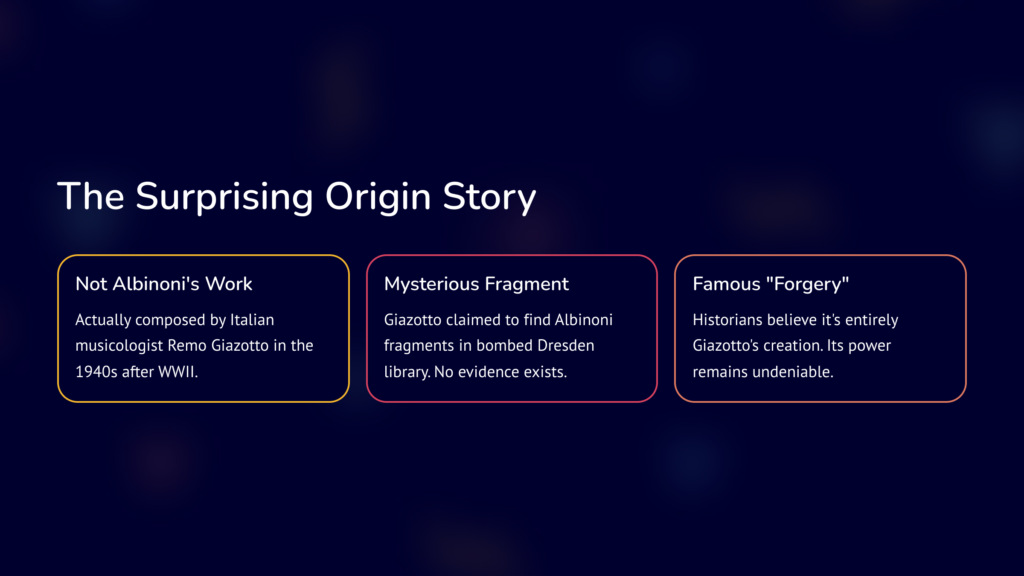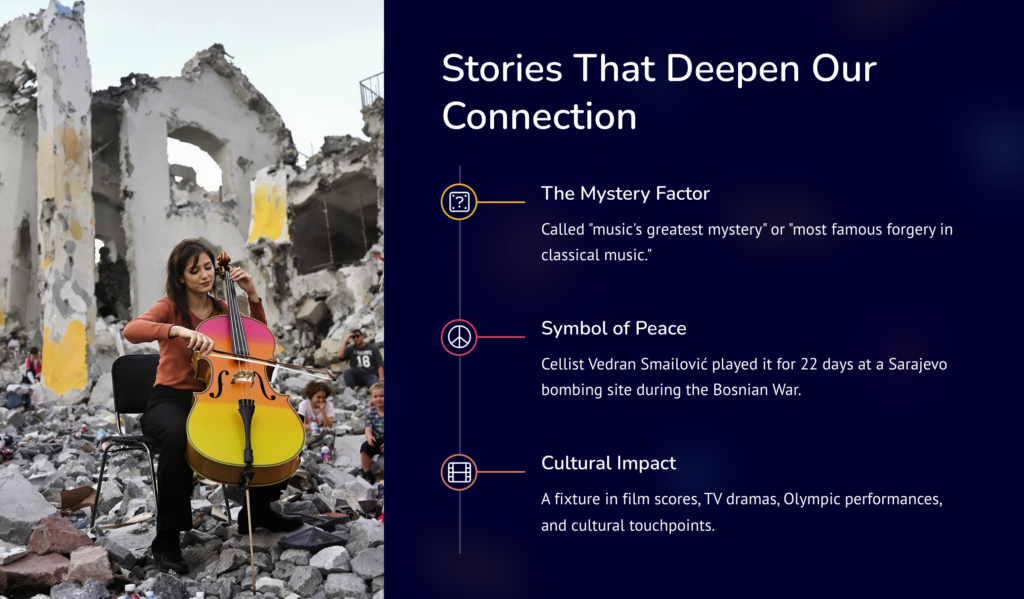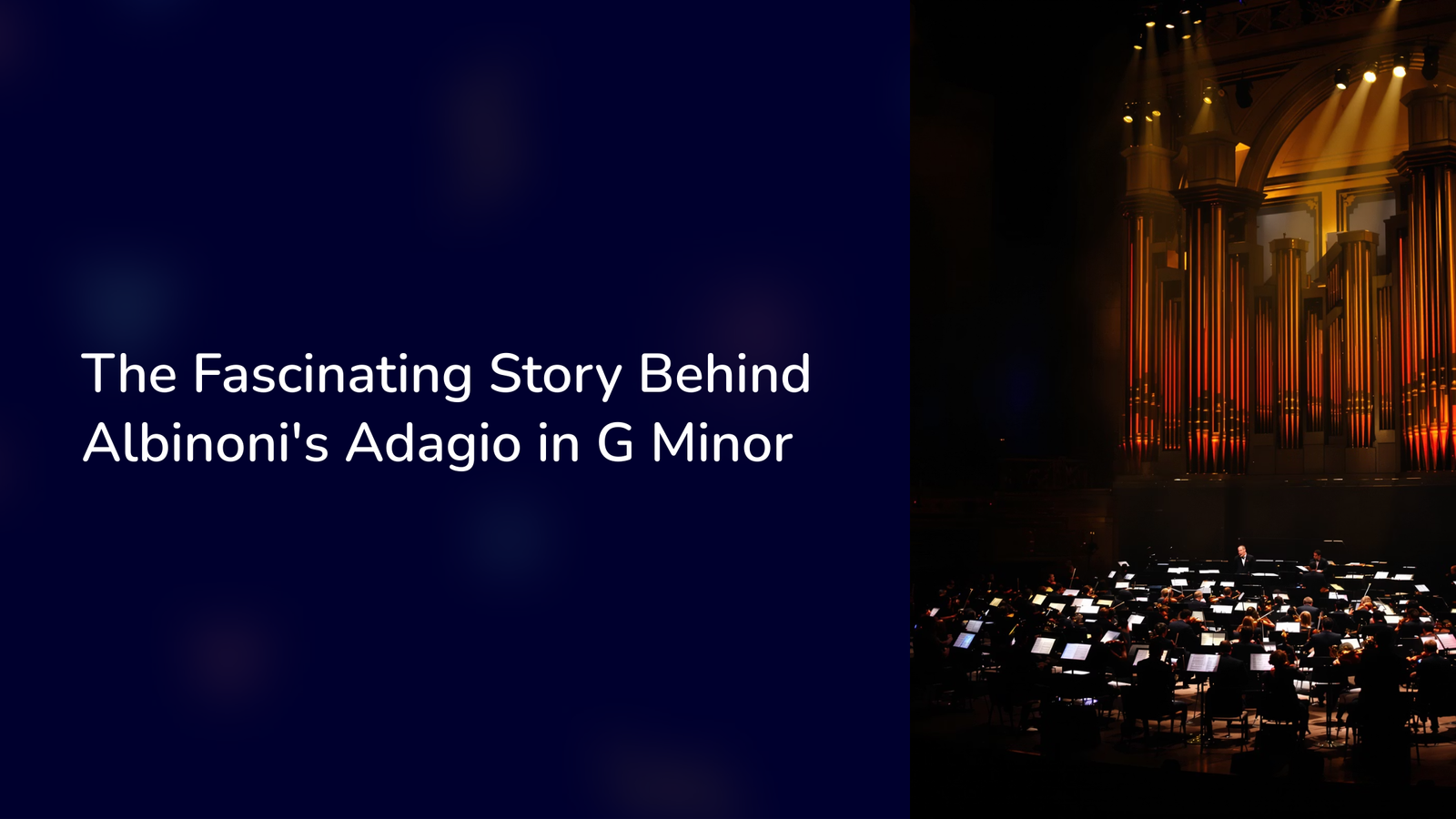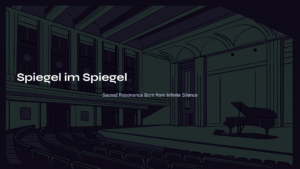Have you ever heard that hauntingly beautiful piece of classical music that seems to tug at your heartstrings? The one that appears in countless films and emotional moments? That’s likely “Adagio in G Minor,” commonly attributed to Baroque composer Tomaso Albinoni. But what if I told you this famous piece holds one of classical music’s most intriguing mysteries? Let’s dive into the real story behind this emotional masterpiece and discover how to truly appreciate it.

The Surprising Origin Story
Many people believe “Adagio in G Minor” was composed by Tomaso Albinoni, a Venetian Baroque composer. However, the truth is far more fascinating. The piece was actually composed by Italian musicologist Remo Giazotto in the 1940s, following World War II.
Giazotto claimed he discovered fragments of Albinoni’s work—just a bass line and a few melody measures—in the bombed ruins of the Dresden State Library in Germany. He published the completed piece in 1958 with the title “Adagio in G Minor for Strings and Organ, based on two themes and a figured bass by Tomaso Albinoni.”
Here’s where it gets interesting: the original Albinoni fragment that Giazotto supposedly found has never been revealed to the public. No library records confirm its existence. In fact, music historians now widely believe the piece is entirely Giazotto’s creation, with perhaps minimal (if any) connection to Albinoni. There are even reports that Giazotto admitted toward the end of his life that he had composed the piece himself.
This neo-Baroque composition, with its melancholic beauty, has become one of music’s most famous “forgeries”—yet its power remains undeniable regardless of its true composer.

How to Fully Appreciate This Musical Masterpiece
Want to experience this piece at its fullest? Here are some tips:
Find a quiet moment for deep listening. The slow tempo, gradually building structure, and repeating lament bass line deserve your full attention. Try using headphones in a quiet space to fully immerse yourself.
Pay attention to your emotional response. The melody evokes various emotions—love, loss, regret, and hope. Different listeners connect with different aspects depending on their own life circumstances. Notice how the music affects your mood as you listen.
Use your imagination. While listening, let your mind wander to personal memories or scenes from films. This piece has soundtracked countless emotional moments in movies and memorial services, making it rich with interpretive possibilities.
Compare different versions. Beyond the original strings and organ arrangement, you can find interpretations for piano, guitar, full orchestra, and more. Each brings out different nuances of the composition.

Stories That Deepen Our Connection to the Music
The Mystery Factor: The Adagio is sometimes called “music’s greatest mystery” or “the most famous forgery in classical music.” The lingering questions about its true origin add an intriguing layer to each listening experience.
A Symbol of Peace: The piece has become deeply connected with themes of war, loss, remembrance, and peace. Perhaps the most moving example occurred during the Bosnian War in 1992, when cellist Vedran Smailović played this piece for 22 consecutive days at a bombing site in Sarajevo to honor 22 citizens killed while waiting in a bread line. This real-life story of music bringing hope amid despair touched hearts worldwide.
Cultural Impact: The Adagio’s emotional power has made it a fixture in film scores, television dramas, Olympic performances, and other cultural touchpoints. It’s become the quintessential piece for expressing both profound sadness and transcendent beauty.

The Enduring Power of Music
Whether composed by Albinoni or Giazotto, this piece transcends questions of authorship. As one listener beautifully expressed: “Regardless of whether I was in a happy-go-lucky state of mind, a somber mood, or even a state of ignorance, the familiar melody would force me to halt whatever I was doing and feel a deep sense of emotional intensity.”
The Adagio reminds us that sometimes the greatest art emerges from unexpected places—even from the ashes of war or the creative license of a musicologist. Its ability to move us, regardless of its origin story, speaks to music’s remarkable power to connect with our deepest emotions.
Next time you hear those opening notes, remember the fascinating tale behind them and allow yourself to be fully present with one of classical music’s most powerful and mysterious creations.
#ClassicalMusic #AlbinoniAdagio #MusicHistory #MusicalMysteries #BaroqueMusic #MusicAppreciation



